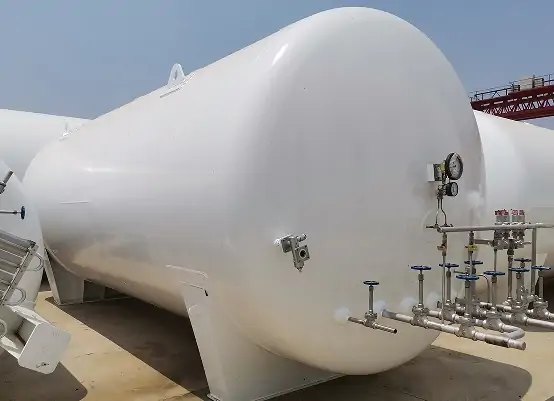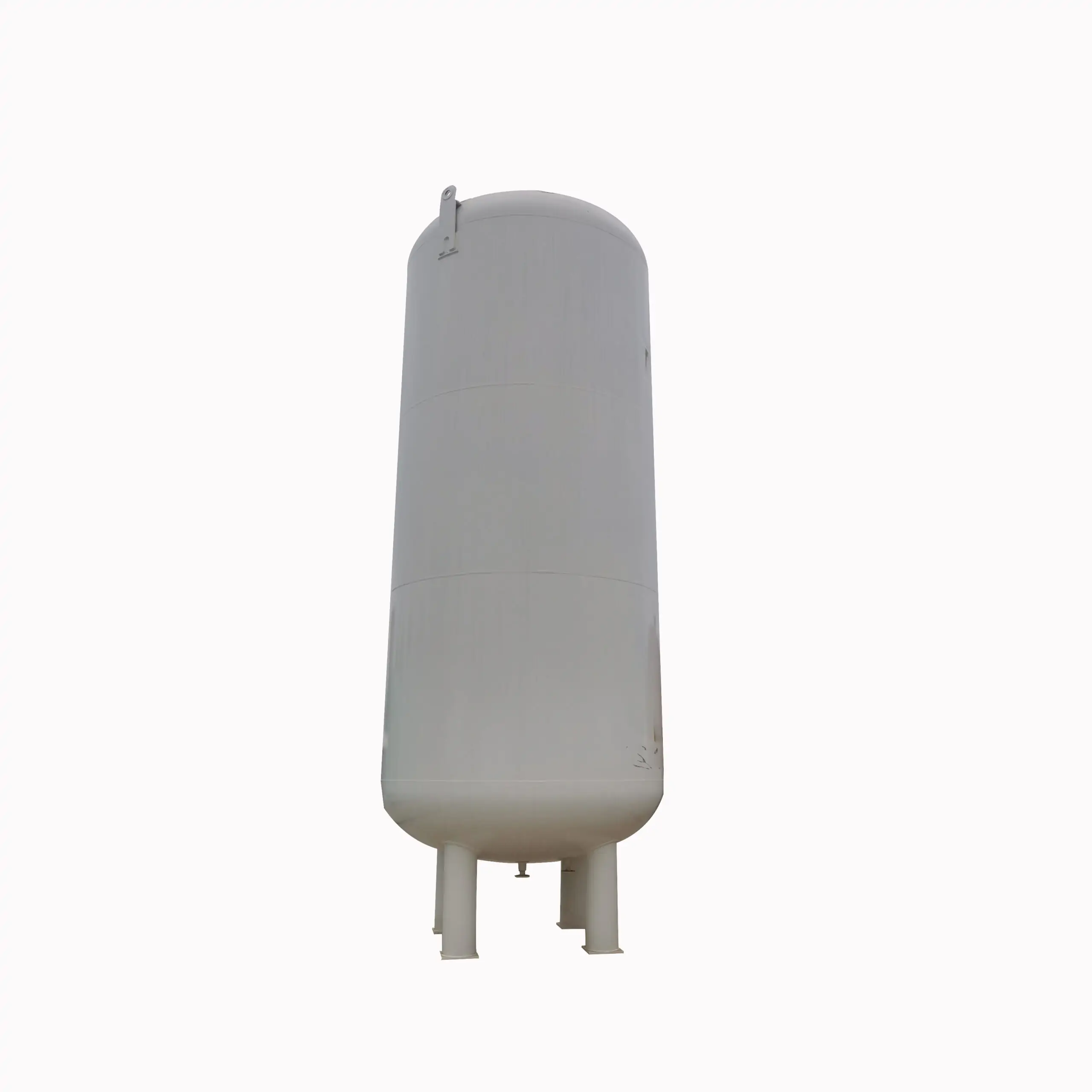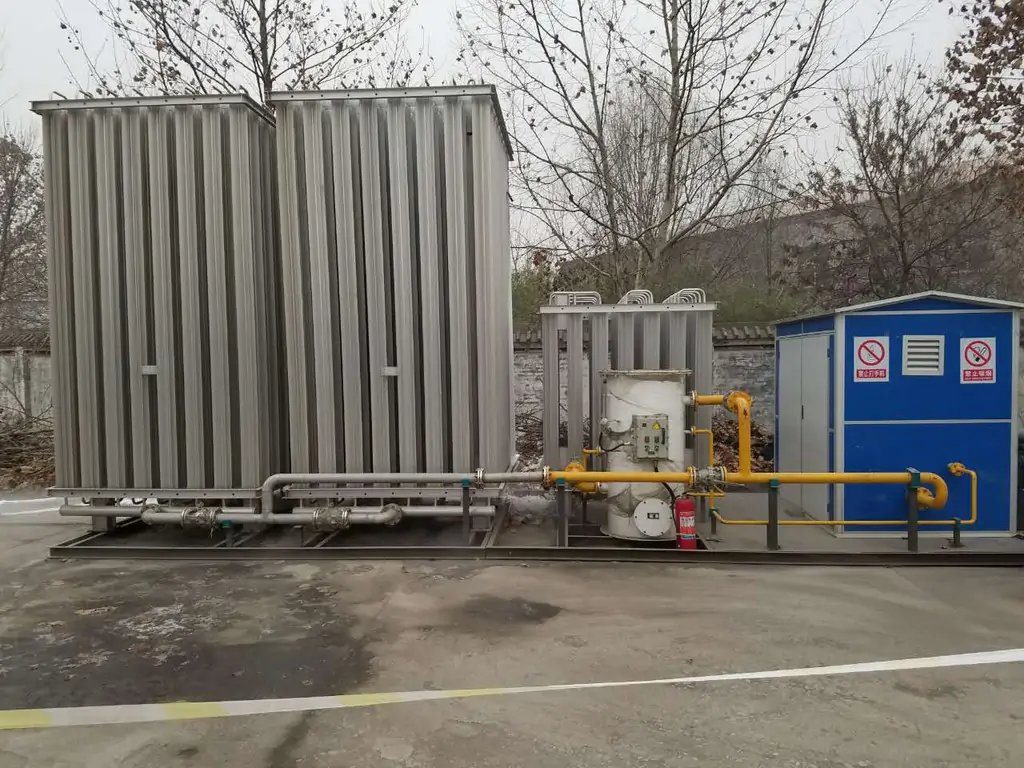LNG storage tank
LNG storage tanks are generally divided into vertical and horizontal types as LNG storage devices. The advantages of vertical tanks mainly lie in their smaller footprint, and the requirements for tank cofferdams and safety spacing are smaller than those for horizontal LNG storage tanks when building vertical LNG storage tank gasification stations, so they are chosen by business users.
LNG storage tanks are generally divided into vertical and horizontal types as LNG storage devices. The advantages of vertical tanks mainly lie in their smaller footprint, and the requirements for tank cofferdams and safety spacing are smaller than those for horizontal LNG storage tanks when building vertical LNG storage tank gasification stations, so they are chosen by business users. LNG storage tanks have the disadvantage of fast ramp-up and large overpressure emission losses. In the case of a 60m³ tank with a service life of no more than 1 year, for example, a horizontal LNG tank can generally be stored for more than 20 days at a temperature of no more than 25 degrees Celsius without the tank pressure reaching the pressure standard for compulsory discharge, but a vertical LNG tank will start to overpressure and discharge in about 10 days. Therefore, when choosing an LNG storage tank, business users need to select the right type of tank for their use according to the actual working conditions to avoid excess losses.




































































































































